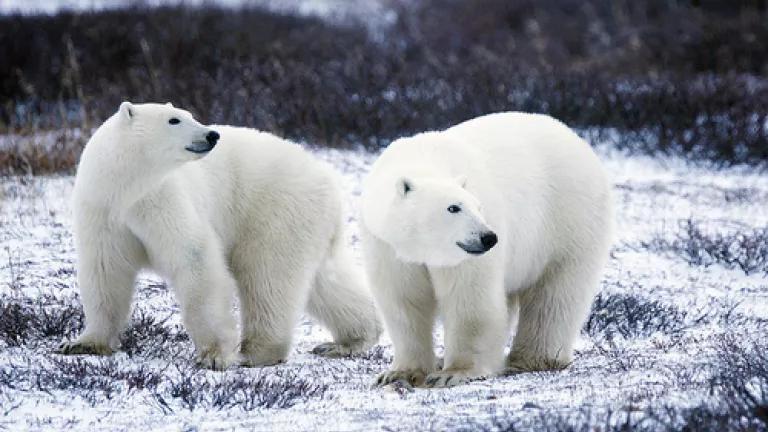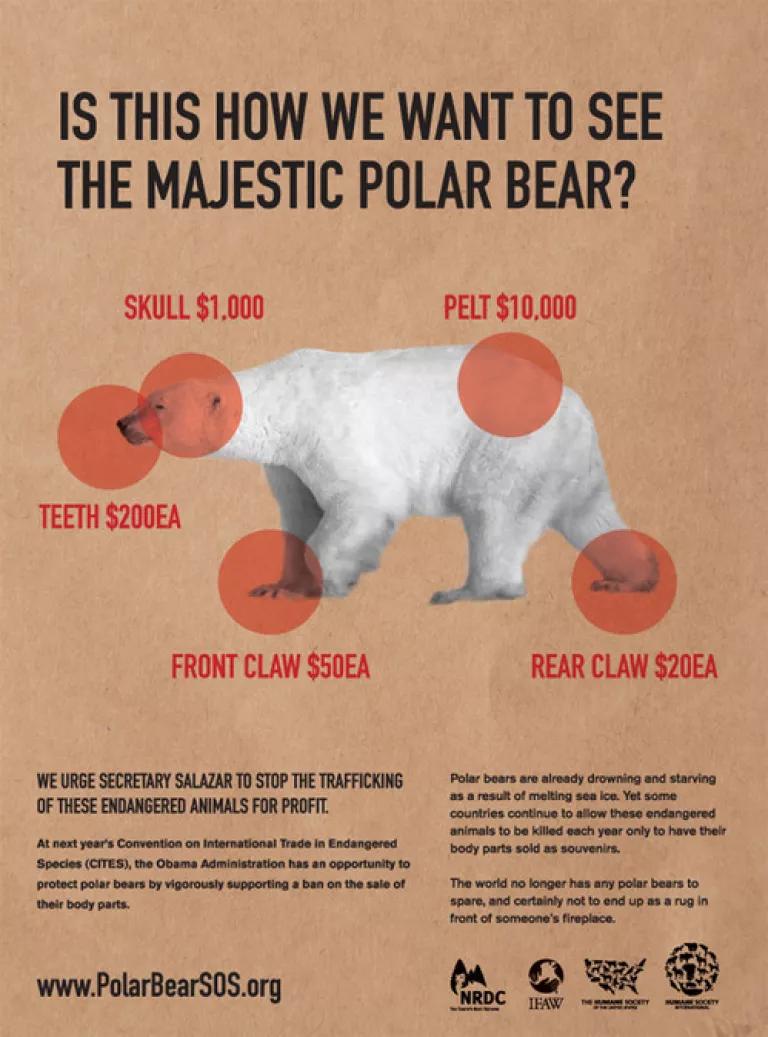Record Prices Drive the Commercial Hunt of Polar Bears - Will the International Community Address It?

On Sunday, the Los Angeles Times published a major story by Kim Murphy exploring the growing concern over commercial hunting of polar bears. The key driver of the international trade is record high prices for polar bear hides.
Across Canada, prices for polar bear pelts have soared over the last few years, with two at a June 20 auction in Ontario fetching a record $16,500 each.
"Four years ago, we were lucky to get a thousand dollars for a 7-foot polar bear. Now, you can sell that 7-foot polar bear for between $3,500 and $4,000," said Frank Pokiak, chairman of the Inuvialuit Game Council in northwestern Canada.
The result has been predictable: increasing quotas.
The government of Nunavut drew international cries of protest in October when it increased the hunting quota from eight to 21 bears in western Hudson Bay — where numbers already have declined from 1,200 two decades ago to about 700. Nunavut officials said their most recent aerial survey proved there were actually 1,000 bears in the region. Hunters in the Nunavik region of northern Quebec, probably motivated by soaring pelt prices, killed 60 bears during the 2011 early spring hunt, several times the normal harvest, the Canadian Broadcasting Corp. reported.
Canada remains the only country on the planet to allow the legal commercial harvest and international trade in polar bear parts. Canadian hunters kill about 500 bears a year, 300 of which enter the international market, according to the Los Angeles Times.
Unfortunately, and this is reflected in the article, the controversy surrounding the polar bear commercial trade is often framed as “Inuit versus conservationists.” But NRDC supports the subsistence use of polar bears by native communities. And, it should be acknowledged, there are real economic costs that a ban on international commercial trade would impose on some Inuit communities. The Canadian government must be prepared to address those issues and provide for economic assistance. But allowing the continued commercial harvest of an endangered species isn’t an economic plan.
The next month is a crucial time, which is why NRDC and our allies have been running ads like the one below. As nations around the world prepare for the next meeting of the Convention on International Trade in Endangered Species (CITES) countries are deciding what proposals to put forward. The United States and other nations are considering a proposal to end the international polar bear trade. Let’s hope they do the right thing, so our children can grow up in a world where you can see polar bears someplace besides a zoo.


